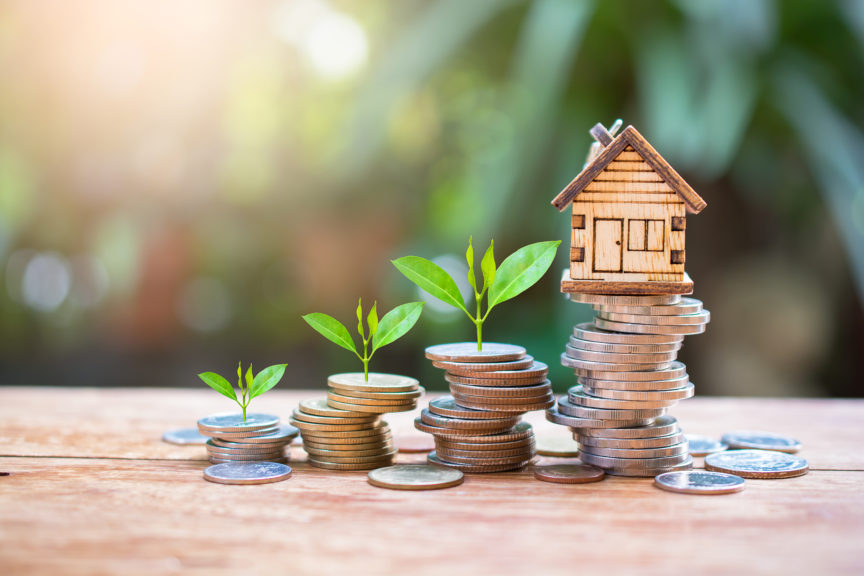Boo! Let’s Do a Sustainable Halloween!
Helena IturraldeOctober 7, 2019

Little kids at a Halloween party stock image (Adobe)
After Christmas, Halloween is the second-most wasteful holiday. What with the inevitable gorging on plastic-wrapped candy, buying of multiple synthetic costumes and endless decorations, perhaps it’s time this much-loved tradition was subject to a little scrutiny.
When I moved to Key Biscayne in August 2009 I was surprised how many shelves in local stores were filled with Halloween sweets and decorations – many of which were destined to be used only once: costumes, sprays, face paints and the like. Aisles and aisles of single-use plastics were rapidly emptied and refilled every day.
How many of those small, plastic-covered candies were going to be handed out? How many would never be eaten?
Ten years have passed, but I still believe we can innovate to celebrate this holiday in a more conscious and sustainable way. Here are my top tips:
100 percent plastic-free costumes: reuse, repurpose and upcycle
Instead of buying a pre-made costume shipped from the other side of the world, consider reusing or recycling from previous years – or even make your own from things you already have in the house! You can rent or swap costumes with friends, too – organize a ‘trying-on’ party with friends or at school for a fun way to try new ideas.
Try browsing local thrift shops for vintage gear, or if you’re feeling creative make something using natural materials. Use any fabric you have at home and wrap it around yourself – be creative: symbolize the planet or the seas you plan to save!
Eco-décor
Decorating is one of the most wasteful parts of Halloween. Many decorations are made from single-use non-recyclable plastics. The mantra is reuse, reuse, reuse: everything from last year is still good. Even better, try natural seasonal products like different sized pumpkins or dried palm branches to create a seasonal look. There are so many things you already have in your home that can be turned into seasonal décor.
Green Halloween parties
You already know single-use tableware, cups and plates are coated in waterproof plastic and are therefore not recyclable. Surprisingly, neither are used paper napkins. If you have children and don’t want to use glass cups and reusable ceramic plates, you can buy beautiful melamine plates and cups that can be washed and reused forever – they’re also prettier and cheaper than single-use. Make DIY textile napkins out of old bedsheets or any piece of fabric you are no longer using. Cut into four-inch squares.
If you truly need single-use, please buy plant-based tableware which at least decomposes in landfills, such as from leanorb.com.
Use the season as an opportunity to teach children more sustainable ways to celebrate: make homemade juices, milkshakes, sandwiches and snacks from natural ingredients. Be on the lookout at local garage sales for seasonal cookie-cutter shapes. Remember children will be consuming a lot of sugar in their candies – there’s no need to add more!
Use a whole local pumpkin
When carving your squash, separate the seeds from the pulp and wash them. Lay them on an oven tray. Salt them and let them roast outside in full sunlight for a few hours. Turn the seeds over and leave them for another few hours until they are totally dry, salted and ready to eat. Teach your children where seeds come from and how they can be eaten/planted. After this, carve out the pumpkin pulp. Make a delicious soup or bake bread with it. Once Halloween is over, compost whatever is left of your pumpkins.
Candy remedies
Americans buy approximately 600 million pounds of candy for Halloween every year, spending $2.6 billion. That’s a lot of candy – most of which is individually wrapped in plastic!
I know this practice is embedded in today’s culture, but let’s educate our children – or allow our children to re-educate us parents! Kids hear about the need to take care of their planet in school, and they need to see consistency at home.
Try substituting alternatives like organic treasures: seeds, seashells, beautiful beach stones collected with your children beforehand. Why not give your trick-or-treaters a secondhand Lego figure (easy to find at garage sales and thrift stores). Too harsh? Try a Halloween origami figure made with your children. Bats, ghosts, witches, skeletons, mummies and more are at your disposal! You’ll save a fortune and you will have more fun.
If this is too much try to give reasonably instead — tell the children only one candy per child to reduce the use of plastic and help stop climate change. They will know what you mean – and may even feel good about it!
You could also make homemade “witch’s finger” cookies, meringue ghosts and other spooky treats with your children from natural ingredients without preservatives. In addition to reducing the amount of garbage produced from those non-recyclable single-serve packages, you’ll provide a healthier alternative to sweets.
Go reusable
If your children plan on trick-or-treating, please make sure you send them out with baskets, canvas bags or pillow cases that can be used year after year.
Ultimately…
We all know we need to make changes to mitigate climate change – and now our children are asking to be a part of the solution. Embrace their intelligence and together you will come up with better, sustainable traditions that suit your family – and ensure their future.



Join the conversation